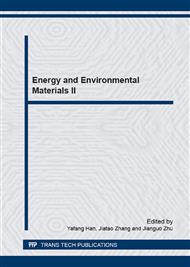p.167
p.173
p.178
p.185
p.191
p.199
p.207
p.214
p.220
Development of Functional Polymer as Oil-Well Cement Retarder
Abstract:
In this study, a novel polymer retarder DRH-200LG was synthesized to solve the problems of retarding failure, strong dispersivity under high temperature and adverse impact on the strength development of cement stone. The composition of the polymer was confirmed by IR, and its thermal stability was proved by DSC, TG analysis and thermal treatment at 200 °C. Furthermore, the stability and strength development of cement slurry was evaluated by the comparative consistency method and ultrasonic method, respectively. The results show that DRH-200LG has good high temperature-resistance and retarding performance, presenting favourable influence on the stability and strength development of cement slurry. DRH-200LG shows a good application prospect in the cementation of deep & ultra-deep wells. And it has some guiding significance in the research and innovation of a novel polymer used as oil well cement retarder.
Info:
Periodical:
Pages:
191-198
Citation:
Online since:
March 2015
Authors:
Keywords:
Price:
Сopyright:
© 2015 Trans Tech Publications Ltd. All Rights Reserved
Share:
Citation:


